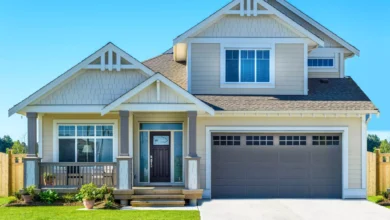Can You Get Homeowners Insurance in Florida?

Living in Florida offers sun-soaked beaches, vibrant communities, and year-round outdoor living—but it also comes with unique risks like hurricanes, flooding, and sinkholes. So, can you get homeowners insurance in Florida? The answer is yes—but it requires dedicated planning, smart coverage decisions, and careful comparison of providers. In this guide, we’ll explore the ins and outs of Florida homeowners insurance, highlight top companies, explain crucial coverage types, and share expert tips for finding affordable yet comprehensive protection.
🏠 Understanding Homeowners Insurance in Florida
When you ask, can you get homeowners insurance in Florida, several key factors come into play:
- Hurricane risk: High winds and storm surges continue to be the primary threats.
- Flood zones: Many coastal regions require separate flood insurance, which isn’t covered in standard policies.
- Sinkholes: Unique to Florida geology—specific coverage is often needed.
- Rising rates: Due to frequent hurricanes, premiums are higher than in many other states.
Despite these factors, homeowners can still secure coverage through private insurers, the Florida Hurricane Catastrophe Fund (FHCF), and the Citizens Property Insurance Corporation—Florida’s insurer of last resort.
🔍 Who Offers Homeowners Insurance in Florida?
Here’s a breakdown of the main options:
1. Top Private Insurance Companies
- State Farm – The largest homeowner insurer in the U.S., offering competitive rates and strong customer service across Florida.
- Allstate – Provides bundle discounts and helpful add-ons like identity theft protection.
- Progressive – Expanding in Florida, offering flexible rates and options for home+auto bundles.
- Citizens Property Insurance – Florida’s state-backed insurer, available when private markets cannot provide coverage.
- CHUBB & Pure Insurance – High-end markets with comprehensive catastrophe policies.
2. The Citizens Property Insurance Corporation
- What it is: Florida’s insurer of last resort if you can’t find coverage elsewhere.
- Why it matters: Offers policies for homes in high-risk zones, but often at higher premiums and with more limited coverage.
- Learn more at Florida Citizens
3. Florida Hurricane Catastrophe Fund (FHCF)
- Purpose: Acts as a backstop for insurers, helping stabilize the market after major storms.
- Impact on you: Lowers risk for insurers, which may help moderate homeowner rates statewide.
✅ Can You Get Homeowners Insurance in Florida Today?
Yes—but it’s not always easy or cheap. Here’s what to expect:
A. Location is Everything
If your home is in a high-risk hurricane or flood zone, insurers may:
- Deny your application
- Charge high premiums
- Require higher windstorm deductibles (e.g., 5%–10% of insured value)
B. Flood Insurance May Be Necessary
Standard homeowners policies do not cover flood damage. To protect your home:
- Join the National Flood Insurance Program (NFIP): fema.gov/flood-insurance
- Explore private flood insurance options, which may offer faster claims and better service
C. Prepare for Sinkhole Endorsements
If you live in areas prone to sinkholes (e.g., central Florida):
- Request a sinkhole inspection
- Add a sinkhole endorsement to your homeowners policy
💡 Coverage Options: What Should You Include?
When securing homeowners insurance, consider these policy components:
- Dwelling Coverage (Coverage A) – Pays to rebuild your home after covered peril, like hurricane or fire.
- Personal Property (Coverage C) – Replaces furniture, electronics, clothing—typically 50–70% of dwelling limit.
- Liability Protection (Coverage E) – Covers legal expenses if someone is injured on your property.
- Loss of Use (Coverage D) – Pays living costs if your home is uninhabitable after damage.
- Windstorm / Hurricane Deductible – Often structured as a percentage of dwelling value.
- Flood Insurance – Vital if you’re in a flood zone—organized via NFIP or private.
- Sinkhole Endorsement – Crucial for geological risk areas.
- Wind Mitigation Credits – Many insurers offer discounts for impact-resistant roof, storm shutters, and fortified construction.
💵 How Much Does It Cost?
Homeowners insurance costs in Florida are notably high:
- Statewide average (~2023): $4,000–$5,000/year
- Low-risk areas (homeowner spots): $2,000–$3,000/year
- High-risk coastal or hurricane zones: $5,000–$10,000+ yearly
- Citizens policyholders average over $6,000/year
Rates vary based on:
- ZIP code
- Dwelling value
- Deductibles
- Built‑in protection
- Claims history
🛠️ How to Get the Best Rates & Coverage
1. Shop Around
Use home insurance comparison tools such as:
- Policygenius
- The Zebra
- Direct quotes from State Farm, Allstate, and Progressive to compare net premiums.
2. Bundle Your Policies
Home + auto bundles often save 10–25% off both premiums.
3. Add Wind Mitigation Features
Install:
- Impact-resistant roofing
- Storm shutters
- Reinforced doors/windows
These upgrades can earn substantial discounts across most insurers.
4. Increase Deductibles
- Hurricane deductible: Typically 2%–10% of home’s insured value
- Other claims: Consider raising deductible to $1,000 or $2,500 for lower annual cost
5. Consider Private Flood Insurance
Rates may be cheaper than NFIP for lower‑risk properties. Be sure to compare both.
6. Avoid Filing Small Claims
Each claim can raise premiums—reserve insurance for major losses.
7. Monitor Policy Renewal Stats
Check if your insurer is increasing rates due to industry losses. If so, it may be time to switch.
👨🔧 What If You Can’t Get Private Coverage?
Citizens Insurance Steps In
If denied by private insurers, Citizens is usually available—but:
- Its premiums are often higher
- It may have reduced coverage and stricter payout terms
- Still better than no protection
Could Coastal Rate Reform Help?
The Florida Legislature is exploring initiatives to:
- Cap rate hikes
- Promote private market competition
These may improve affordability in the future—especially for coastal homeowners.
✅ Final Verdict: Yes, But…
So, can you get homeowners insurance in Florida? Absolutely—but:
- Check location-specific risks (hurricane, flood, sinkhole)
- Be ready for windstorm deductibles of 2%–10%
- Flood insurance is essential for many zones
- Wind mitigation features can lower rates significantly
- Compare private insurers and only consider Citizens as a backup
📌 Quick Checklist for Florida Homeowners
| Action Item | Why It Matters |
|---|---|
| Use home insurance comparison sites | Get 5+ quotes to ensure competitive pricing |
| Bundle home & auto | Saves 10–25% on both policies |
| Add wind mitigation upgrades | Earns credits; lowers annual premium |
| Add flood insurance if needed | NFIP or private—storm damage isn’t automatically covered |
| Raise hurricane deductible | Cuts premiums—balance risk vs. savings |
| Avoid unnecessary claims | Keeps claims-free discounts |
| Review policy annually | To lock in new discounts and monitor cost changes |
🔗 Helpful Links & References
- State Farm Florida Policies – statefarm.com
- Allstate Florida Insurance – allstate.com
- Progressive Homeowners in FL – progressive.com
- Citizens Property Insurance – citizensfla.com
- National Flood Insurance Program – fema.gov/flood-insurance
- Wind Mitigation Discounts – floridamortgageinfo.com
📝 Conclusion
To answer the big question—can you get homeowners insurance in Florida?—the answer is a confident yes. While challenges like hurricanes, floods, and sinkholes increase cost and complexity, private insurance is still available—and often at competitive rates if you work smartly:
- Compare quotes from five or more insurers
- Deploy wind mitigation measures
- Add flood protection where required
- Bundle policies and raise deductibles
- Save Citizens as your backup plan
By staying informed and regularly re-evaluating coverage, Florida homeowners can secure durable, reliable insurance while managing costs—even in one of the nation’s riskiest markets.

![Pet Insurance Plans Worth Considering in the USA [2025]](https://snokidoplayzone.store/wp-content/uploads/2025/07/images-19.jpg)


